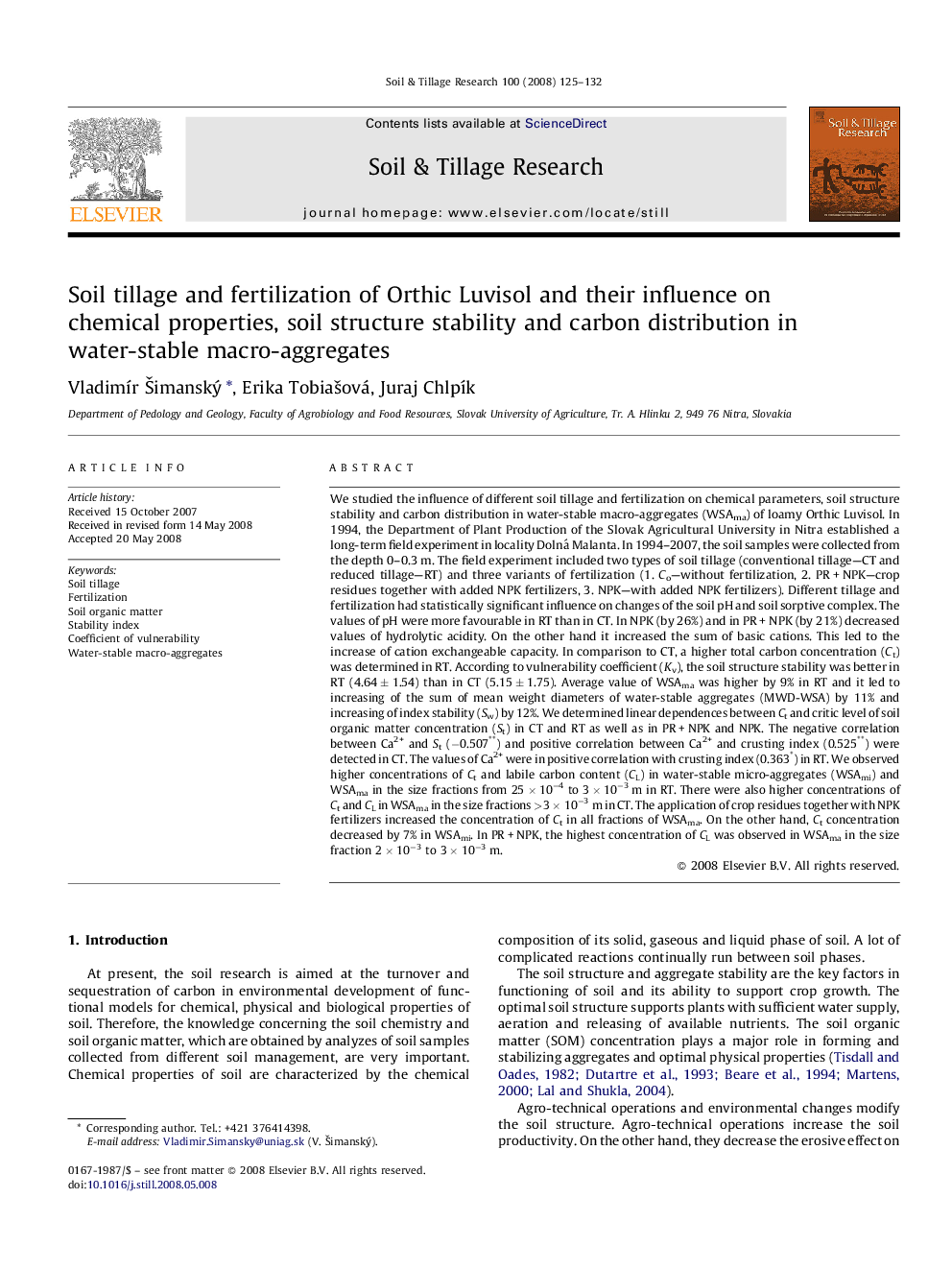| Article ID | Journal | Published Year | Pages | File Type |
|---|---|---|---|---|
| 306482 | Soil and Tillage Research | 2008 | 8 Pages |
We studied the influence of different soil tillage and fertilization on chemical parameters, soil structure stability and carbon distribution in water-stable macro-aggregates (WSAma) of loamy Orthic Luvisol. In 1994, the Department of Plant Production of the Slovak Agricultural University in Nitra established a long-term field experiment in locality Dolná Malanta. In 1994–2007, the soil samples were collected from the depth 0–0.3 m. The field experiment included two types of soil tillage (conventional tillage—CT and reduced tillage—RT) and three variants of fertilization (1. Co—without fertilization, 2. PR + NPK—crop residues together with added NPK fertilizers, 3. NPK—with added NPK fertilizers). Different tillage and fertilization had statistically significant influence on changes of the soil pH and soil sorptive complex. The values of pH were more favourable in RT than in CT. In NPK (by 26%) and in PR + NPK (by 21%) decreased values of hydrolytic acidity. On the other hand it increased the sum of basic cations. This led to the increase of cation exchangeable capacity. In comparison to CT, a higher total carbon concentration (Ct) was determined in RT. According to vulnerability coefficient (Kv), the soil structure stability was better in RT (4.64 ± 1.54) than in CT (5.15 ± 1.75). Average value of WSAma was higher by 9% in RT and it led to increasing of the sum of mean weight diameters of water-stable aggregates (MWD-WSA) by 11% and increasing of index stability (Sw) by 12%. We determined linear dependences between Ct and critic level of soil organic matter concentration (St) in CT and RT as well as in PR + NPK and NPK. The negative correlation between Ca2+ and St (−0.507**) and positive correlation between Ca2+ and crusting index (0.525**) were detected in CT. The values of Ca2+ were in positive correlation with crusting index (0.363*) in RT. We observed higher concentrations of Ct and labile carbon content (CL) in water-stable micro-aggregates (WSAmi) and WSAma in the size fractions from 25 × 10−4 to 3 × 10−3 m in RT. There were also higher concentrations of Ct and CL in WSAma in the size fractions >3 × 10−3 m in CT. The application of crop residues together with NPK fertilizers increased the concentration of Ct in all fractions of WSAma. On the other hand, Ct concentration decreased by 7% in WSAmi. In PR + NPK, the highest concentration of CL was observed in WSAma in the size fraction 2 × 10−3 to 3 × 10−3 m.
